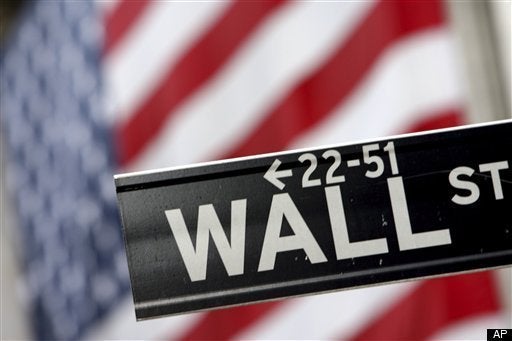
Will the lion -- the suddenly resurging stock market -- continue to roar or revert back to a lamb?
That was the question of the hour among Wall Street pros over the weekend, following a great week for investors. After a bruising six-week loss of 16% between early March and late April, the slumping, schizophrenic stock market suddenly looked like a lion again last week by awakening from its Rip Van Winkle slumber and transforming itself into Superman, LeBron James and Samson all wrapped into one.
As a result, the Dow zoomed 5.3% or 511.55 points in four consecutive winning sessions, in the process racking up its best week of the year.
That surge raises a perplexing question: Was the giant gain a fluke or the start of something big?
Judging from what I hear from Sam Stovall, the chief investment strategist of Standard & Poor's, don't bet the farm on further near term gains. He opts for the meekness of the lamb, telling me "I'm getting concerned."
In effect, Stovall challenges those rosy market forecasts based on the expected emergence of a decidedly peppier economy, a logical extension of President Obama's repeated promises of an economic scenario characterized by much better times ahead.
Stovall is not alone in his skepticism. If indeed a zippier economy is factored into forecasts of a sunnier market, it would surely be viewed as pure hokum by the employees of Wells Fargo, which just announced plans to lay off 3,800 workers, as well as the folks at Merck, which followed with the news that it will ditch 15% of its workforce. You can also toss in a dubious note from the 15 million unemployed Americans who can't find jobs.
To give any credibility to expectations of a more vibrant economy means you must ignore or minimize the effects of a number of economic storm warnings that makes any exuberance highly suspect.
Here are some of these warnings. The housing market is starting to crack. A jobless rate of 9% to 10% (now 9.5%) is expected by numerous economists to last for another couple of years, with some saying a workforce close to pre-recession levels is unlikely before 2013 or 2014 at the earliest. Consumer confidence is plummeting. Chinese economic growth is slowing. And the International Monetary Fund has just warned that Europe's debt crises are threatening to spill over to other regions.
Stovall, who leaned to the optimistic side in earlier interviews I did with him this year and has now shifted gears, voices some clear economic concern, given his belief the recovery will be half-speed at best, meaning, he says, GDP will likely grow 3% to 3.5% this year, versus a more normal 7% in the early stages of an economic recovery.
Why a slower rate of economic growth? Stovall sees three main drags -- continuing high unemployment (which he pegs at 9.7% this year and 9.2% next year), high consumer and government debt levels, which should pressure growth, and a further reduction in non-residential construction.
Interestingly, a concerned Standard & Poor's recently downgraded its expectations this year for the S&P 500 from 1270 to 1190 (now 2,196), and is recommending an underweighting in equities and an overweighting in cash.
On a more bearish note, Stovall says several of the firm's technical indicators suggest a 50% retracement of the bull market advance from March 9, 2009, through April 23, 2010. If that were to happen, he says, we would see the S&P 500 tumble to 950 and the resumption of a bear market, since the S&P 500 would have fallen 22% from its recovery high.
Stovall blames the 16% market decline in the latter part of the second quarter on a four-letter word: fear. Defining these letters, he points to F -- financial reform legislation; E -- environmental impact of the Gulf Coast oil spill; A -- Asian tensions, particularly as it relates to Chinese growth; and R -- recession or the world slipping into a double-dip as a result of sovereign debt worries and a slowdown in U.S. consumer spending.
Stovall, who has examined the patterns of 17 bear market declines (10% to 20%) since World War II, says history would suggest we now have a greater chance of morphing into a new bear market than we do of emerging from a correction.
Stovall, who characterizes himself as a near-term bear and a long-term bull, notes that his cautious posture for now could be open to question based on the vigor, or lack of it, of second quarter earnings reports and company earnings guidance for the rest of 2010, both of which we'll begin to see this week..
Stovall expects S&P 500 earnings to rise 42% in the second quarter, followed by decelerating growth of 31% and 28%, respectively, in the third and fourth quarters. He notes these are fairly optimistic predictions, but points out the comparisons are easy because we're coming off a low base.
For those investors who disagree with Stovall's near-term worries and believe the giant four-day rally represents a positive market turn, he gave me his five favorite stocks for the long term, all sporting S&P's highest five-star rankings. They are Chevron, CVS Caremark, IBM, Medtronic and Oracle, all rated market outperformers over the next 12 months.
While they may seem appealing, keep in mind the jury is still out whether this will be the year of the lion or the lamb. With all the land mines out there, common sense, judging from Stovall's thoughts, suggests that as far as putting new money to work in the market is concerned, be a lamb.
What do you think? E-mail me at Dandordan@aol.com.